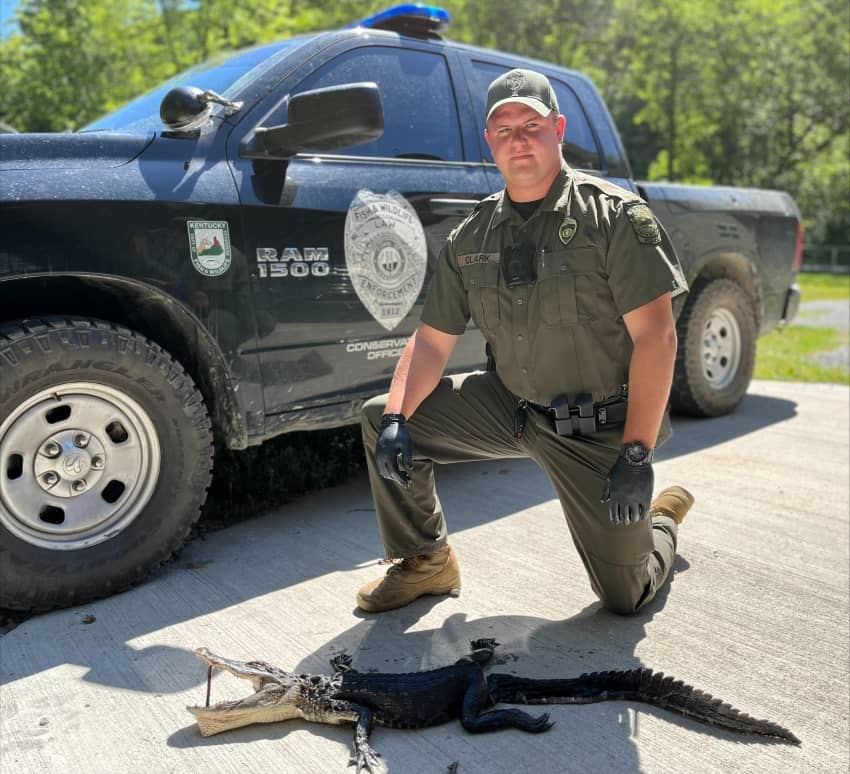
One Harlan County man is in trouble with the law after reporting seeing an animal that you wouldn’t typically expect to see in Eastern Kentucky.
Following reports of an alligator in a creek close to the community of Big Laurel in June, the Kentucky Department of Fish and Wildlife launched an inquiry.
Officers from the department were able to locate the four-and-a-half-foot creature close to where they were promised it would be when they went searching for it in the Greasy Creek area off KY 2008.
When they returned after going to obtain the equipment to catch the alligator, they saw blood on a rock by a creek and a blood trail extending up to the highway.
Officers were directed to a relative of the suspect, later identified as Cameron Cornett, 23, of Big Laurel, by the inquiry. They discovered blood in a pickup truck’s bed there.
The suspect brought the alligator back to Kentucky from Florida and kept it in a cage in his front yard until it escaped two to three weeks before the incident was reported to authorities, the relative informed the police.
Before a video of the alligator in the creek circulated on social media, nobody knew where the animal was. The relative reportedly disclosed to the DFW officers that Cornett had instructed certain people to kill the animal because he was worried about the attention it was receiving.
Cornett is accused of transporting and possessing an exotic animal that is inherently dangerous without a license or proper documentation, failing to report the animal’s escape to the Kentucky Department of Fish and Wildlife Resources, and keeping other exotic animals without a license or proper documentation.
“Kentucky Fish and Wildlife occasionally receives reports of alligators and caimans in state waterways,” Clark said. “There are reasons why we have laws in place prohibiting the importation of exotic and inherently dangerous animals.”
Two reasons are potential transmission of diseases and introduction of species that can harm Kentucky’s native wildlife, people, pets or livestock.
“Alligators don’t make good pets. Even a smaller one can injure a person,” Clark added. “When an alligator grows beyond a person’s capacity to care for it, oftentimes it gets released into the wild, and then it becomes a potential danger to others. Besides, it’s unlikely to survive through the winter.”



